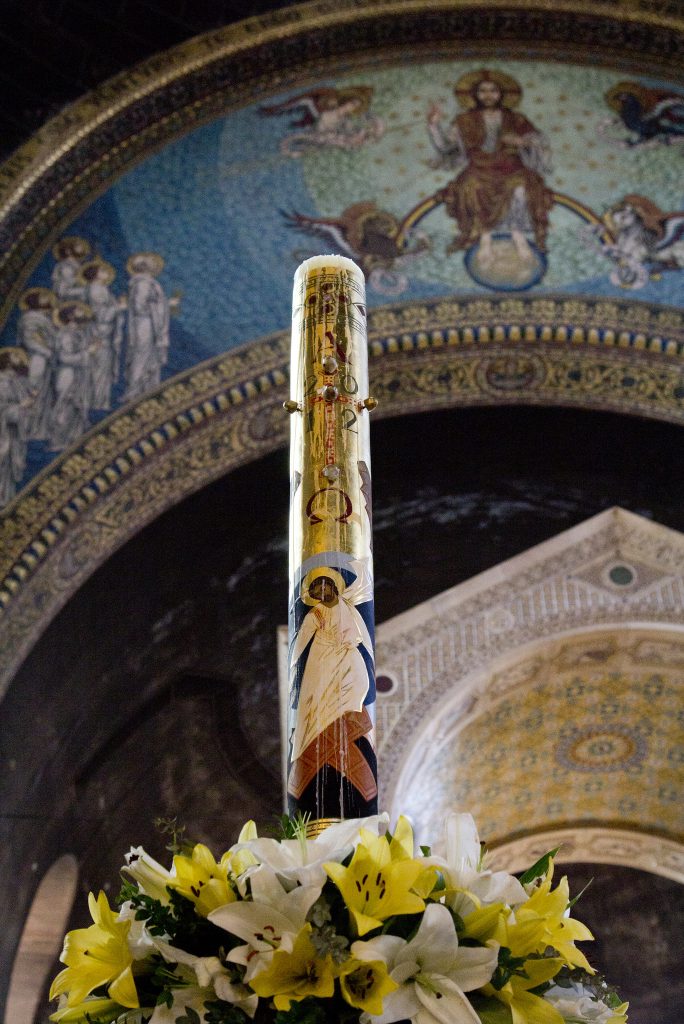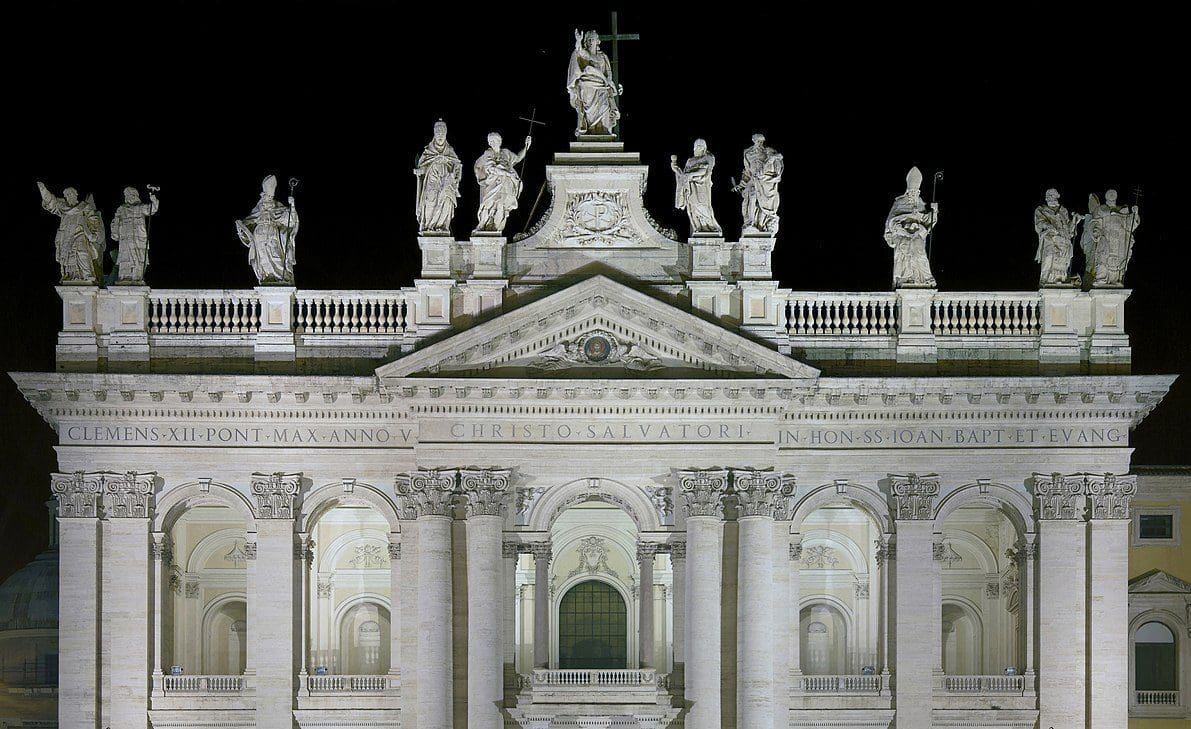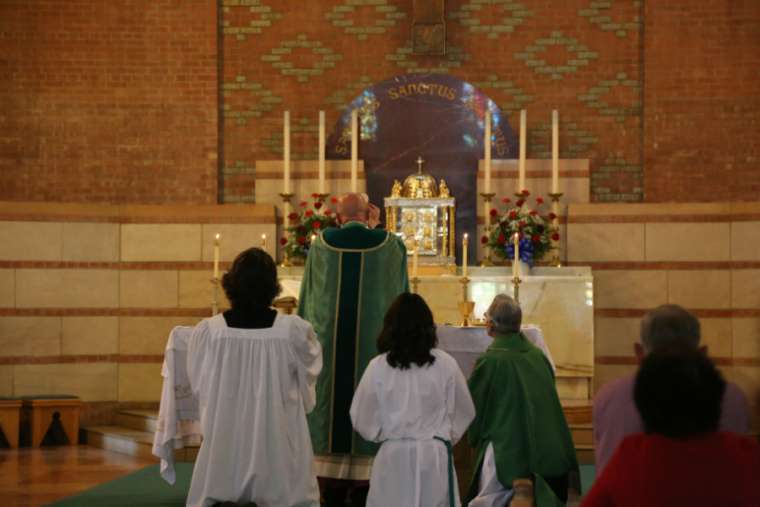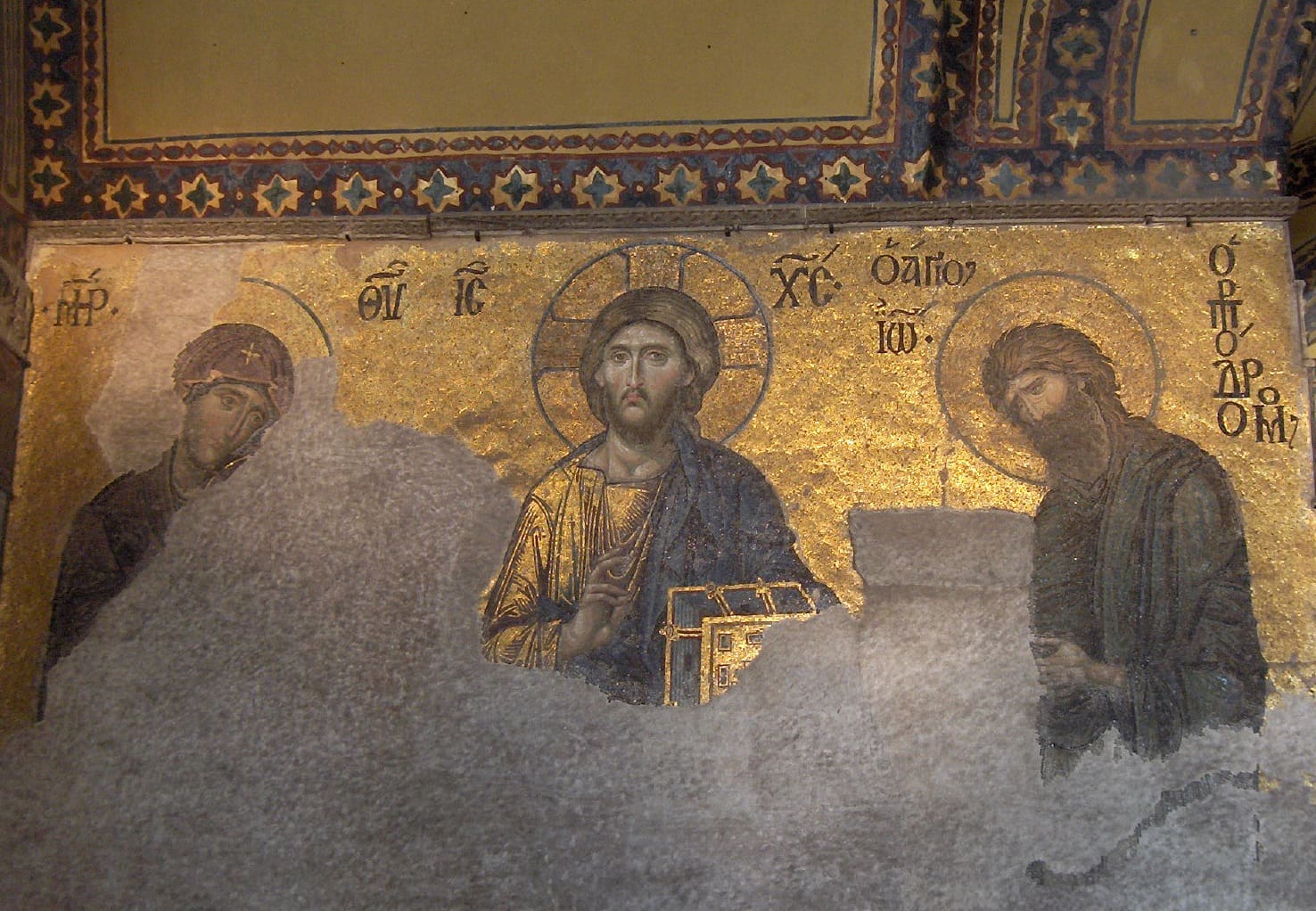If your parish regularly offers Holy Mass in the Extraordinary Form, or if you keep track of blogs on the traditional liturgy, odds are you have heard of places celebrating the rites of Holy Week according to the pre-1955 usage. In recent years, interest in this particular expression of the liturgy has grown, such that nearly every place where Holy Week is offered in the older form, a discussion occurs as to which form of Holy Week will be offered.
Pope Benedict XVI’s motu proprio Summorum Pontificum grants general faculty to priests to celebrate liturgical rites according to the missal of Pope St. John XXIII, which was promulgated in 1962. This missal included the then seven-year-old reformed Holy Week of the venerable Pope Pius XII, which was promulgated in 1955. This reform of Holy Week constituted the greatest rubrical change to the missal of Pope St. Pius V since its publication, and in many ways it was a foretelling of other major changes to the Mass, the fruits of which are found in the missal of Pope St. Paul VI (i.e., the Ordinary Form).
Having only been in place for seven years, the presence of the reformed Holy Week rites in the missal of 1962 has given rise to considerable questions in traditional communities as to whether it is more in the “spirit” of the traditional liturgy to celebrate Holy Week according to its pre-1955 form. What’s more, this concern seems to have been heard by Rome. In 2018 the Pontifical Commission Ecclesia Dei granted an ad experimentum indult to a number of traditional religious orders and societies to celebrate Holy Week according to the pre-1955 usage. (It should be stated that for the priest who is not a member of one of these orders or societies, a particular indult should be sought before celebrating the pre-1955 usage in a parish, though it seems that these have been given freely in the past.) Interestingly, the recent publication of the Vatican edition of the 2021 ordo for the Extraordinary Form also includes permission to offer abolished feasts and observe some rubrics which were removed from the general calendar in 1955, provided those practices are customary or devotional to the faithful in that place.
Given the rise of interest in the pre-reformed usage of the Holy Week rites, it is worthwhile to do a brief comparison of these rites. As a general statement, one significant aspect of the pre-reformed Holy Week which draws interest is its clear attachment to the way the liturgy was celebrated in the early centuries of the Church. The Mass of Palm Sunday is an excellent demonstration of this point.
In 2018 the Pontifical Commission Ecclesia Dei granted an ad experimentum indult to a number of traditional religious orders and societies to celebrate Holy Week according to the pre-1955 usage.
Palm Sunday
In the pre-1955 Palm Sunday liturgy, the rite for the blessing and distribution of Palms constitutes nearly an entirely separate Mass (or a so-called “Dry Mass of the Palms”). The reason for this was that formerly when the Pope celebrated this rite in Rome, two Masses were offered—one at St. Lawrence Outside-the-Walls and a second at St. John Lateran, with a procession with palms taking place between the two. Eventually, the location of this Mass was moved to St. Peter’s and the canons of the basilica gathered with the Pope beforehand at the oratory of St. Maria in Turri for the blessing of palms.
The “dry Mass” consists of an Introit, Collect, Epistle, Gradual, and a Gospel (all with the same ceremonial as a Mass) but no consecration or communion. Following the Gospel, another prayer is said aloud to mimic the Secret. A preface is sung, then the Sanctus, followed by a five-paragraph “anaphora” which is prayed over the palm branches at the altar. The palms are then distributed at the communion railing, and a procession commences outside and then returns to the church (or to the church where Mass will be offered). When the procession reaches the doors of the church, they are shut with two cantors inside. The celebrant and cantors then chant the Gloria laus et honor in dialogue, back and forth from inside and outside the church. At the end, the Subdeacon takes the processional cross and knocks on the doors of the church. They are opened, and the procession continues to the altar where the priest vests in chasuble and begins the Mass. Much of the rest of the Mass continues as any Mass would, with the exception of the Passion reading, read by three assisting ministers, which includes the account of the Last Supper from St. Matthew. The conclusion of the passage is read by the deacon with the ceremonial of candles and incense which normally accompanies the gospel at a solemn Mass.
The reformed (i.e., post-1955) rite eliminates the “dry Mass” entirely and replaces it with a brief rite of blessing of palms before the Mass. The priest and ministers reach the altar and omit the Prayers at the Foot of the Altar. A free-standing table is set up in the sanctuary and the priest goes around the table to face the people and offers the prayer of blessing. After this, palms are distributed and the procession occurs with the omission of the rite at the door. Red vestments are worn for the procession rather than the violet of the pre-reformed rite. When the Mass begins, the priest changes into violet chasuble. The remainder of the Mass is much the same, with an abbreviated form of the Passion gospel and the omission of the Last Gospel. Interestingly enough, the rubrics prescribe that the priest say aloud the entire phrase, Orate, fratres, ut meum ac vestrum sacrificium acceptabile fiat apud Deum Patrem omnipotentem (versus simply the first two words, as in the 1962 Missal), but no particular reason is given as to why this change is introduced but not applied to the remainder of the Missal. In many ways, the rite to bless the palms is much the same as it appears in the missal of the Ordinary Form.
Holy Thursday
The Masses during the week are virtually unchanged in the pre-1955 form, with the exception that the Last Supper accounts are omitted from the Passion readings. The Mass of Holy Thursday, however, presents another interesting change which was made necessary due to a change in the rite of Good Friday. Formerly, the faithful did not receive Holy Communion on Good Friday, but in the reformed rite of 1955 the priest is instructed to consecrate enough hosts on Holy Thursday so that the faithful may receive Holy Communion the following day.
Formerly, the faithful did not receive Holy Communion on Good Friday, but in the reformed rite of 1955 the priest is instructed to consecrate enough hosts on Holy Thursday so that the faithful may receive Holy Communion the following day.
In the pre-1955 rite, after the distribution of Holy Communion at the Mass of the Lord’s Supper, the priest takes a second host, which he consecrated in the Mass, and places it inside the purified and dried chalice. The paten is placed on top of the chalice upside-down, and a veil is placed over them both and secured at the middle with a ribbon. This apparatus is carried in the solemn procession and reserved during the night at the altar of repose until it is retrieved the following day during the Good Friday liturgy. With the exception of the consecration of a second ciborium rather than a single host, the only other alteration to this Mass in the post-1955 rite is the introduction of the Mandatum, which remained optional.
Good Friday
The pre-reformed texts call the Good Friday liturgy the “Mass of the Pre-Sanctified,” which bears some similarity to the Eastern counterpart: the “Liturgy of the Pre-Sanctified Gifts.” The reformed Holy Week uses the title “Solemn Liturgical Action” and omits references to the Good Friday liturgy as a Mass. The liturgy of Good Friday received the most extensive reform in the post-1955 edition.
In both forms, the priest and ministers wear black vestments as if for Mass. The pre-reformed rite begins with the altar bare except for two unlit candles and a veiled cross upon the altar’s mensa. The ministers genuflect to the cross when entering the sanctuary. While the celebrant prostrates himself before the altar, the assisting ministers spread a single cloth across the altar and place the missal at the epistle side. The priest ascends to the altar, kisses it, and goes to the missal where at once is begun the lesson, which may be read by a competent reader from the place where the subdeacon would usually chant the Epistle. A collect follows, and then the Epistle as normal. The tract is sung, and then the Passion reading from St. John. The solemn intercessions follow in much the same manner as they are done in the postconciliar rite.
Having removed their outer vestments, the priest and ministers go to the altar and retrieve the veiled cross, which is unveiled in the traditional three-stage method. A violet carpet is spread over the lowest step of the altar, and the cross is laid upon the ground for adoration. The faithful approach, making three genuflections, and on their knees they bend low to adore the cross. When this is complete, the cross is restored to the altar.
Then comes the greatest difference between the pre-1955 form and its reformed counterpart. The priest and ministers go to the altar of repose, and the veiled chalice and host is brought to the altar in a solemn procession with incense much like the procession the day before. When they reach the altar, the chalice is unveiled, and the host is slipped on to the paten and placed on the corporal. Plain wine is poured into the chalice, which is likewise placed on the corporal without prayer or gesture. The host, chalice, cross, and altar are incensed in the usual way and the priest washes his hands without saying anything. The Secret is prayed and then the priest says the Orate Fratres without a response from the faithful. Immediately the Lord’s Prayer is said and the priest fractions the host, saying nothing. The host is consumed with the usual prayer and the chalice without saying anything. Following the purification, everyone departs in silence and the altar is stripped again.
The reformed rite of 1955 intentionally eliminates references to this liturgy as a Mass: the “Solemn Liturgical Action.”
The reformed rite of 1955 intentionally eliminates references to this liturgy as a Mass. The “Solemn Liturgical Action” begins with a stripped altar which is bare of cross and candles. No cloth is spread during the prostration. A collect is added to the rite following the prostration which, like the modern form, is said without Oremus. The rest of the rite up to the Passion is much the same as the form in the Missal of St. Pius V.
After the Passion, the priest removes the chasuble and vests in cope, again to underscore that a Mass is not being celebrated. The solemn intercessions are otherwise carried out in the same way. The priest then removes the cope, and the veiled cross is brought from the sacristy by the deacon accompanied by ministers with candles. The cross is unveiled in the traditional method. The cross is not laid on the ground, but is held by acolytes for the veneration of the faithful.
When this is completed, the priest and ministers vest in violet vestments but without maniple. The corporal is spread, and the ciborium is brought from the altar of repose by the deacon without any solemnity. The incensation and washing of hands is omitted, and the priest immediately begins the Lord’s Prayer which the rubrics direct is to be sung by all the faithful together. The priest consumes the host in the normal manner, but there is no chalice. Holy Communion is distributed to the people in the normal method.
Following communion, the priest purifies his fingers in a vessel of water. The ciborium is reposed in the tabernacle of the main altar, after which the priest chants three newly-composed prayers for Good Friday and departs in silence.
The rubrics of pre-1955 assume that the Mass is offered on the morning of Holy Saturday.
Easter Vigil
The most extensive revisions to the Easter Vigil on Holy Saturday are seen in the first half of the vigil. The rubrics of pre-1955 assume that the Mass is offered on the morning of Holy Saturday —and this will pose a difficulty later on with how the pre-1955 form can be offered in the present day.
The ministers begin vesting in violet vestments with the priest wearing a violet cope. The unadorned Paschal Candle is already in its stand in the sanctuary before the vigil begins. A new fire is prepared and blessed outside the church along with the grains of incense for the Paschal Candle. The deacon changes into white dalmatic and is handed the arundo (“reed”)—a long pole supporting a three-branched candle. This is another connection to the Eastern Liturgy where, in the Byzantine form, the priest holds a three-ended candle during the singing of the Paschal Canon at the Easter Vigil.
As the procession enters the church, a taper is used to light the three ends of the reed, each time with the chanting of the Lumen Christi. The reed is placed in a stand near the Paschal Candle and the deacon chants the Exsultet. This particular moment presents a curious element of the traditional liturgy as the deacon himself blesses the Paschal Candle—the only time in the traditional liturgical rites where a deacon is called to bless anything. It is worth noting that in parishes where a deacon and subdeacon are not available, the priest is directed to vest as a deacon to perform this rite. During the chanting of the Exsultet, the deacon stops at certain moments to insert the incense grains and light the candle from the reed. When this is finished, the priest vests in violet chasuble and the deacon in violet dalmatic. Twelve prophecies follow.
The reformed Holy Week sees the blessing of the Paschal Candle outside of the church, much as it is found in the modern form. The use of the reed is eliminated, and the prophecies are shortened from 12 to four. (Interestingly enough, the Ordinary Form restores some of these omitted lessons, though not all).
After the prophecies, the pre-reformed rite calls for the blessing of the baptismal font. The blessing of water is preceded by a preface, and then is blessed in the traditional method where the water is divided and sprinkled in four directions—symbolic of the four rivers of Eden. The priest breathes over the water in the form of the Greek letter Ψ—the first letter of the word psyche (“Spirit”). The Oil of Catechumens and Sacred Chrism are added to the water. If baptisms are to occur, they are done now.

Afterwards, the Litany of Saints is chanted and the priest and ministers prostrate themselves on the steps to the altar. At the invocation, “From all sin, deliver us we pray,” the priest and ministers rise and go to the sacristy where they vest in white Mass vestments. While this is done, the altar is prepared for a solemn Mass with cloths, candles, flowers, and reliquaries. Afterwards, the Mass begins as usual with the Prayers at the Foot of the Altar, but no introit is sung.
In general, the Mass is carried out as a normal Mass, but there is also omitted the Creed, the offertory antiphon, the Agnus Dei, the Pax, and the communion antiphon. These omissions are intentionally designed to underscore that the Church as yet is not fully joyful as the Resurrection is still to occur on Easter Day (recall again that this Mass is offered on the morning of Holy Saturday).
Following Communion, in place of the Communion Antiphon, Vespers is chanted in a brief form (recall, this Vigil Mass is being celebrated in the morning). This proposes a difficulty when the pre-1955 Vigil is celebrated today since the Vigil may now lawfully be celebrated in the evening at a time when Vespers has already been said earlier, before the beginning of the Vigil Mass. There is no post communion prayer, but the dismissal is given with the double-Alleluia, followed by the Last Gospel.
The reformed Holy Week divides the Litany of Saints in half, with the blessing of the font occurring in the middle. The rubrics prescribe that if the baptistry is in another room, the priest and ministers go to bless the font while the faithful remain in the church to continue chanting the litany. The priest and ministers kneel for the first half of the litany instead of making a prostration. After the blessing of the font, a newly-composed rite of “renewal of baptismal promises” is inserted into the ritual, which includes an exhortation from the priest—the only time such an exhortation is prescribed in the Mass prior to the reform of Paul VI.
Knowing our rites, and those which came before, can give us considerable insight into what these rites mean or why the Church is commending them to us in our modern era.
The remainder of the Mass is much the same as the pre-1955 form except the Prayers at the Foot of the Altar are omitted and rather than chanting an abbreviated Vespers, the ritual gives an abbreviated form of Lauds. The Vigil and this abbreviated Lauds satisfies the obligation for Matins and Lauds of Easter Day.
Lessons from History
Liturgical rites, apart from being a sacramental encounter with the worship of heaven, are also windows into our past. Knowing our rites, and those which came before, can give us considerable insight into what these rites mean or why the Church is commending them to us in our modern era. Surely, this familiarity is a part of what Pope Benedict XVI meant when he called for the “mutual enrichment” of the forms of the Roman Rite. Even in parishes which do not celebrate the Extraordinary Form, priests who are knowledgeable about the sources of our modern rites are better equipped both to prepare themselves and their assisting ministers to celebrate, but also to teach the faithful the deeper meanings of the rites themselves and how they are intended to enable us to encounter God. In this way, I hope that this brief overview of the rites of the pre-reformed Holy Week can enable pastors and liturgical ministers to better understand the significance of these rites.
For further reading, Gregory DiPippo offers a complete study of each day. These articles are available at New Liturgical Movement:
http://www.newliturgicalmovement.org/2009/04/compendium-of-1955-holy-week-revisions_11.html


